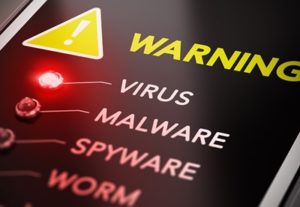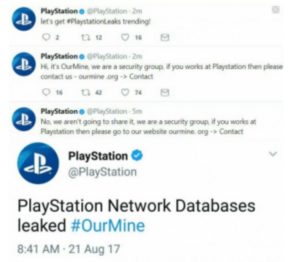If you missed our Cybersecurity Session “Cybersecurity for CEO’s- The Game Has Changed” at The NAA Education Conference, no worries. Our friends at Multi-Housing News have published a great article for you. Special thanks to Sanyu Kyeyune for attending our session and writing the article.
At NAA’s recent conference in Atlanta, panelists shared best practices for keeping vital network information safe from attack.

The panel included Chad Hunt, supervisory special agent with the FBI; Dave McKenna, CEO of ResMan; Frank Santini, cybersecurity attorney of Trenam Law; Jeremy Rasmussen, cybersecurity director of Abacode; and Michael Reese, Chief Information Officer of USA Properties Fund, who moderated the session.
Reese opened the talk by underscoring the commercial real estate industry’s vulnerability to cyber-attacks: “Real estate sits on a goldmine of information, including intellectual property, personally identifiable information—things hackers want to go after.”
Understand Data Value
The cost of stolen information for a single customer can fetch $10-20 on the dark net, but the liability to an organization is $158 or more. This greater figure reflects the cost to recover data, the value of this information to competitors and regulatory fines incurred. Multiply this number by 50,000 customers and the cost amounts to $7.9 million—enough to put some property management firms out of business.
C-suite leaders that understand the total costs of cybersecurity are in better shape to manage a firm’s cyber health. “As a leader, you can’t be afraid to raise the red flag. It’s your responsibility to defend your company and your partners.”
Crafting a risk-based approach helps companies decide on what to defend and how much to spend. This plan should include a guide for CEOs interacting with the media and attorneys working with incident response companies. “There is always a tradeoff between usability and security. That’s why you need to engage with a firm that can bake security into a product from chip to the enterprise level,” Rasmussen warned. “Don’t try to bolt it on at the end.”
Improve Network Visibility
Once the value of data has been quantified, the next step to addressing a company’s cyber health is to ask how secure networks currently are, because on average, noted Rasmussen, by the time a threat has been identified, it has been active for up to 270 days.
“A majority of clients lack visibility into their own networks,” Rasmussen explained. “In today’s world, it’s not a matter of if, it’s when. And not only that, but, are they already in?”
One of the most common software attacks uses ransomware, which encrypts files—effectively eliminating access to important data—and threatens to delete or publish them until the victim pays an agreed-upon sum. However, organization that already has solid system backups in place can combat ransomware by reverting back to previously stored versions. Along with ransomware, phishing attempts, social engineering, attacks on crucial infrastructure, financial fraud and “zero-day” vulnerability (a hole in security unknown to the vendor, typically identified and exploited by hackers over a short time frame) have emerged as some of the most damaging cybersecurity threats.
For some organizations, the expenses associated with downtime and productivity could be crippling. Therefore, advised McKenna, it is crucial to be proactive ahead of time, rather than after a threat has surfaced, to mitigate the cost of recovering from a cyber-attack. “It still comes down to your people not being victims,” he said. “The technology won’t do it all for you.”
According to Hunt, email is the most common point of entry for a cyber-attacker. Because emailing and phone calls already poke holes into a security system, organizations must be vigilant in managing these activities to avoid a breach. One way to do this is by focusing security training on individuals with elevated privileges, such as system administrators and C-suite users, which are hot targets for hackers.
Know Who to Call
“An order of operations might be to call your IT people to stop and contain the threat, contact your attorney to find out what the legal implications are around reporting, call your public relations firm to control the event in the media and then to contact law enforcement,” Rasmussen offered.
Company leadership should also rally IT teams to mandate routine password changes for all users and to require people to upgrade software instead of patching outdated platforms. It is also crucial to keep a list of key personnel to contact when an infiltration occurs. “Locally, the FBI is a good place to start, but you can also call the Secret Service in your area,” Hunt advised. “In either case, develop this personal relationship ahead of time, as local law enforcement has little authority at a corporate level.”
He also suggested that if a particular individual within an organization becomes the victim of a cyber-attack, then this person should file a police report to avoid being implicated as a perpetrator. When interacting with local authorities, Hunt added, it is most effective to do so in a controlled, documented manner.
“Thirteen years ago, there was much less information-sharing with law enforcement, but now it’s more of a two-way street,” Hunt explained. “The FBI can gather information without necessarily having to open a federal investigation.”
Santini encouraged leadership to secure a forensic investigator that will supervise the handling of evidence and assist in documentation—actions that can be helpful in the event of legal repercussions—and to ensure that attorney-client privilege keeps these interactions private.
Rally Vendors
Another important questions that C-suite leaders need to ask themselves is, “What are your partners and their partners doing to ensure cyber safety?”
McKenna emphasized that having a conversation with vendors and suppliers will help reinforce the company priorities, identify the degree of protection already in place and define a plan for handling an intrusion in the future. “You need to know if your vendor will indemnify you for the cost of a breach, if there is a mutual indemnification clause and what level of insurance the vendor requires of its partners,” Santini encouraged. “Make sure you have written agreements with your cloud provider and other suppliers, and negotiate these terms with the help of a lawyer.”
Ultimately, it is up to C-level employees to develop vendor relationships, rather than making cybersecurity a grassroots effort led by an IT department. “There needs to be a separation of duties, just like how a company might hire one accounting team for auditing and another for taxes,” said Rasmussen. “Cybersecurity should be handled the same way.”
Prioritize Efforts
The panel discussion concluded with a punch list of items to help C-level leaders put a cybersecurity plan into action. Here are some key features:
- Detection using 24/7 monitoring and incident response to gain immediate feedback on the effect of a network security initiative
- Implementation of organizational policy/procedures, which requires a cultural shift and buy-in from all members of an organization
- Add-in of other annual assessments, such as penetration testing, phishing, etc., to improve visibility into a network
- Engagement of IT teams to support continuous improvement and governance
- Understanding of “zero-day” threats
- Encouraging collaboration across all stakeholders












